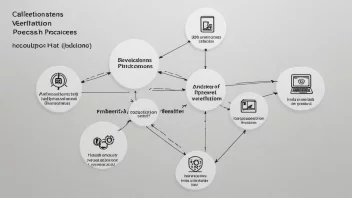Introduction
The landscape of journalism is rapidly evolving, especially in the 21st century. The advent of open-source technology has revolutionized how journalists gather, report, and disseminate information. This article explores the significant role that open-source software plays in modern journalism, highlighting its benefits and offering key recommendations for journalists and news organizations looking to leverage these tools.
1. Transparency in Reporting
Open-source platforms promote transparency by allowing anyone to access and review the code behind the software. This transparency can help journalists build trust with their audience, as it allows for scrutiny of the tools they use to report the news.
2. Collaboration and Community Engagement
Open-source journalism encourages collaboration among journalists, developers, and the public. Platforms like GitHub allow for collaborative projects where journalists can work together with coders and data analysts to produce more comprehensive and well-researched stories.
3. Cost Efficiency
Many open-source tools are free to use, which can significantly reduce the costs associated with journalism. This is especially beneficial for smaller news organizations and independent journalists who might not have the budget for proprietary software.
4. Enhanced Data Analysis
Open-source tools such as R and Python provide powerful data analysis capabilities. Journalists can harness these tools to analyze large datasets, uncover trends, and present data-driven stories in a visually appealing manner.
5. Improved Security and Privacy
With increasing concerns around privacy and data security, open-source software can offer better security solutions. The community-driven nature of open-source projects ensures that vulnerabilities can be identified and patched quickly, providing a more secure environment for journalists.
6. Accessibility for Diverse Audiences
Open-source projects often emphasize accessibility, ensuring that software can be used by a wide range of people, including those with disabilities. This inclusivity allows for a broader audience to engage with journalistic content.
7. Ethical Journalism Practices
By utilizing open-source tools, journalists can adhere to ethical practices by ensuring their methods and sources are open to public scrutiny. This can help mitigate issues of bias and misinformation in reporting.
8. Innovation and Experimentation
Open-source encourages experimentation; journalists can innovate new storytelling methods without the constraints of commercial software. This freedom can lead to breakthroughs in how news is presented and consumed.
9. Support for Local Journalism
Open-source tools can empower local journalists by providing them with the resources to produce high-quality journalism without the need for expensive infrastructure. This support is crucial for maintaining diverse voices in the media landscape.
10. Global Collaboration
Open-source projects often have contributors from around the world, allowing for a rich exchange of ideas and perspectives. This global collaboration can enhance the quality and breadth of journalism by incorporating diverse viewpoints.
Conclusion
Open-source technology has the potential to transform journalism in the 21st century. By emphasizing transparency, collaboration, cost-efficiency, and ethical practices, journalists can leverage these tools to produce higher-quality reporting that resonates with a broader audience. As the media landscape continues to evolve, embracing open-source methodologies will be essential for fostering innovation and maintaining the integrity of journalism.






